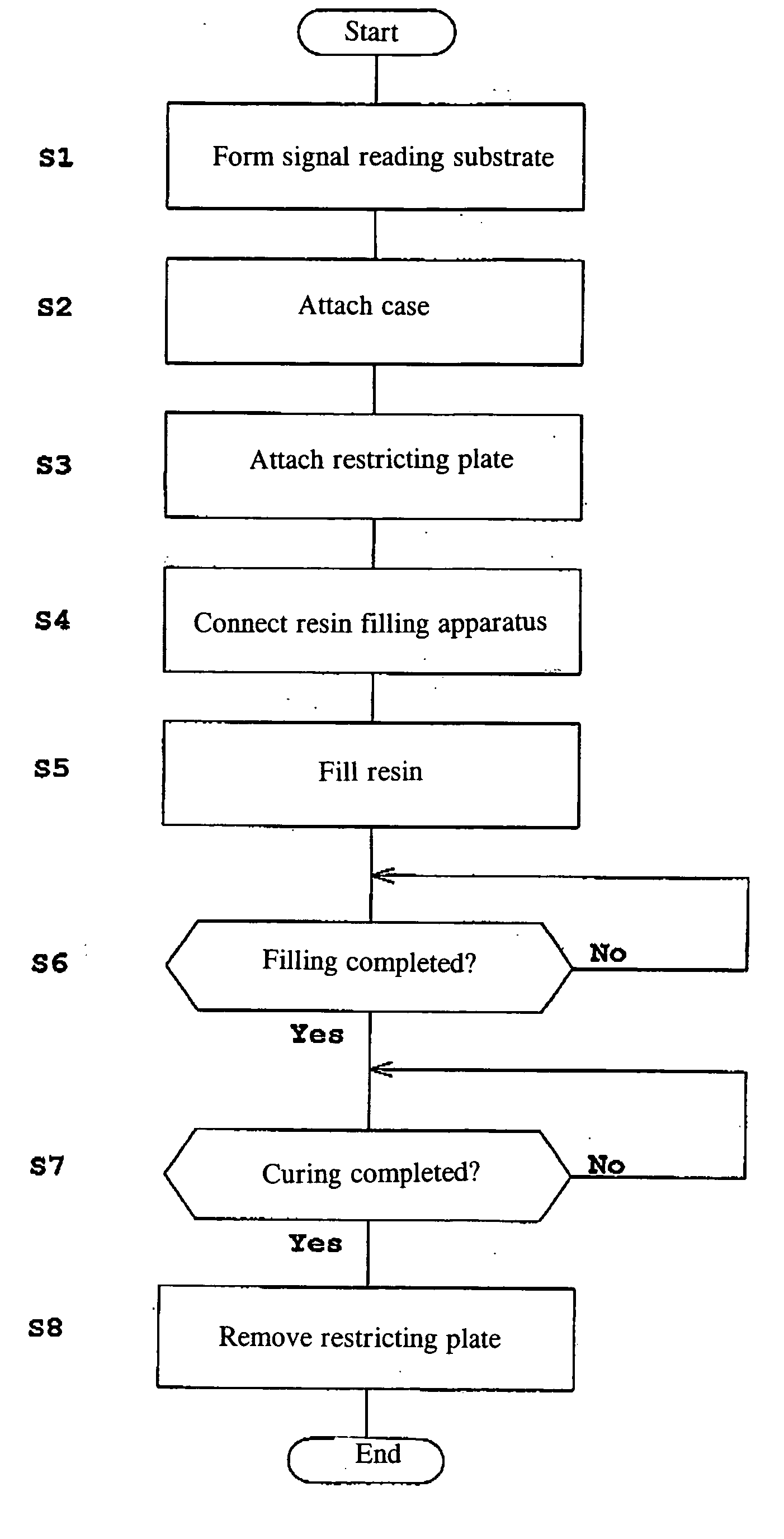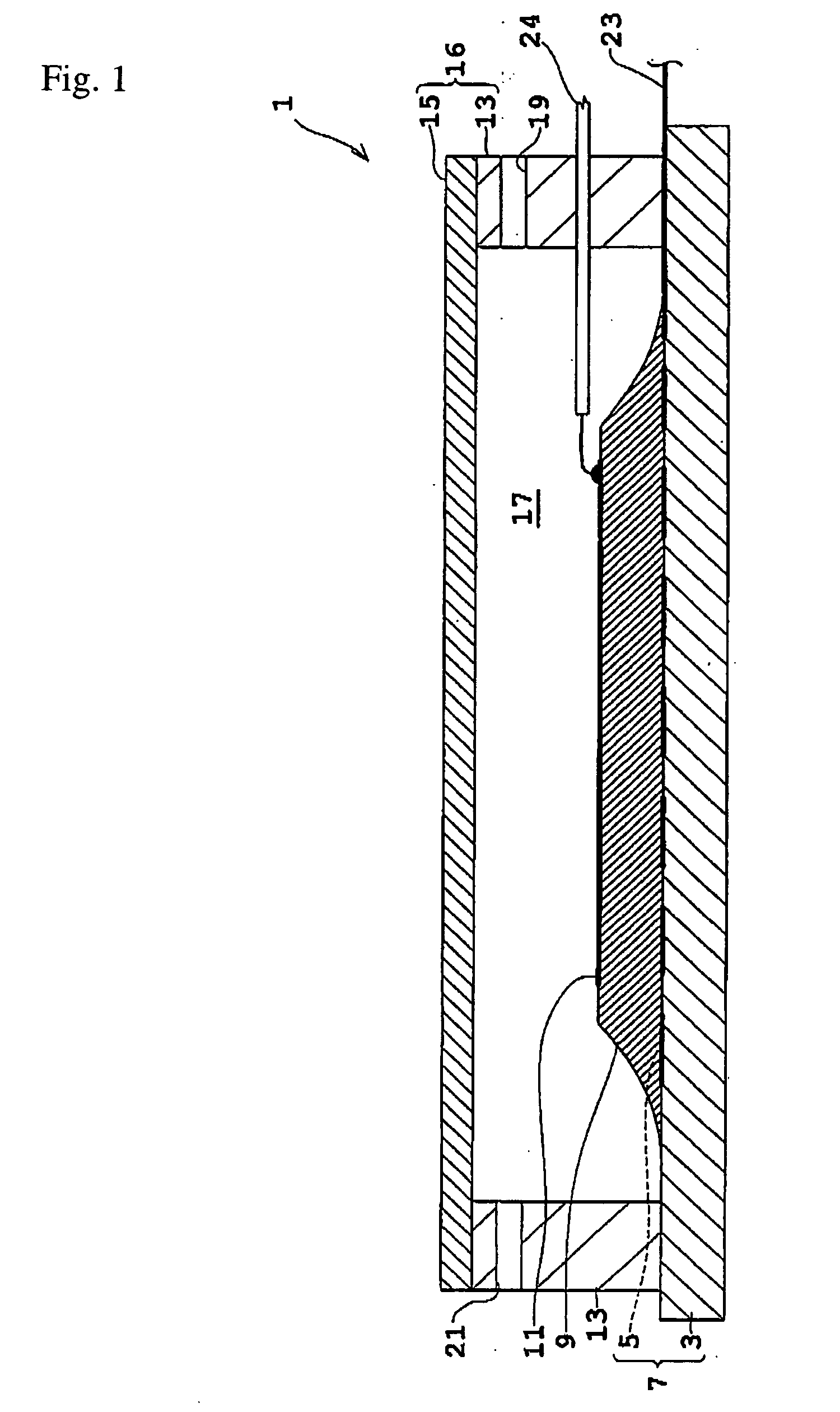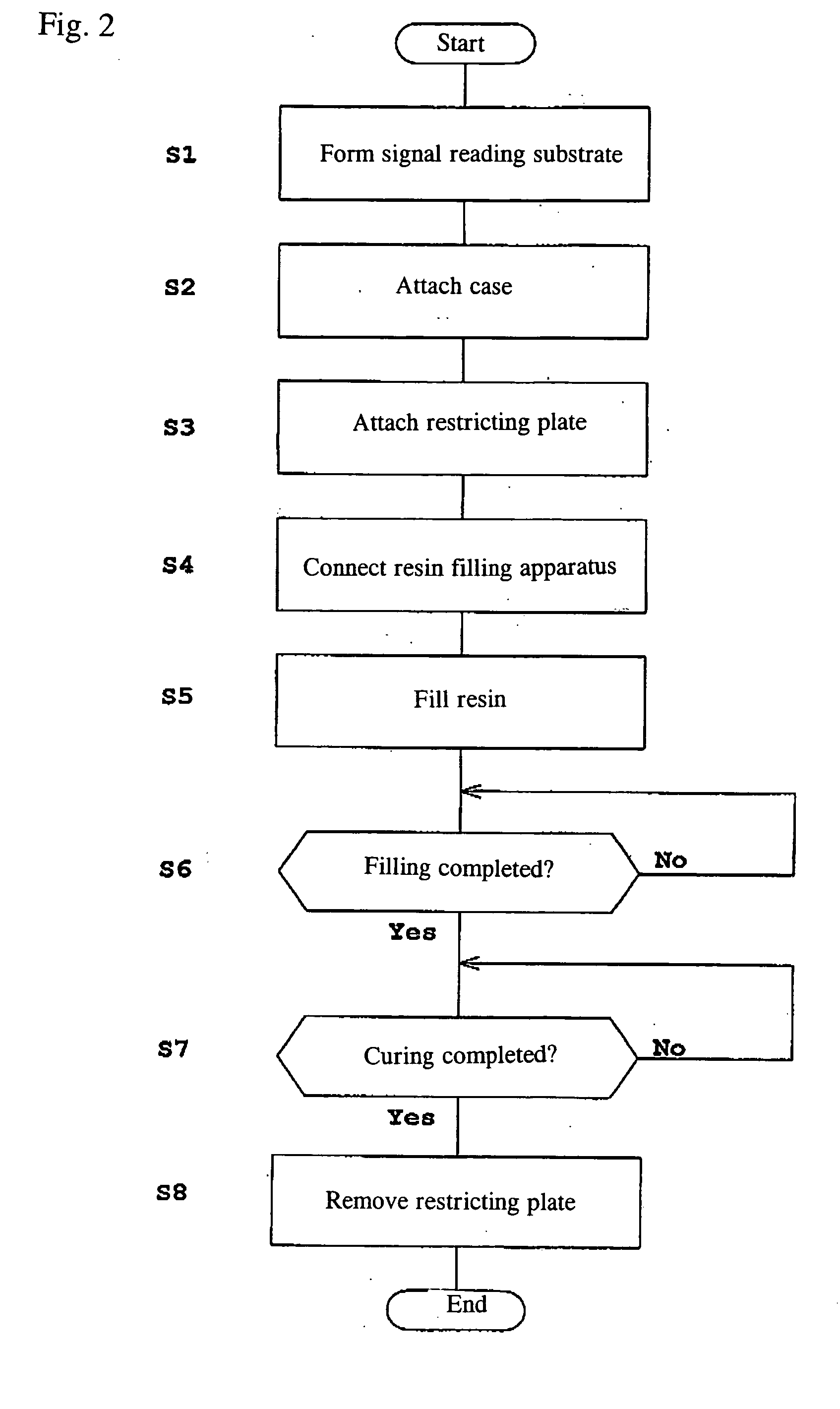Process for producing a flat panel radiation detector and a flat panel radiation detector
a flat panel radiation detector and flat panel technology, applied in the field of flat panel radiation detectors, can solve the problems of deformation or damage of the upper plate, the expansion of the center of the upper plate upward, and the conventional art with such a composition has the following problems
- Summary
- Abstract
- Description
- Claims
- Application Information
AI Technical Summary
Benefits of technology
Problems solved by technology
Method used
Image
Examples
first embodiment
[0031] The first embodiment of the present invention will be described with reference to the drawings.
[0032]FIG. 1 is a profile showing the simplified structure of a flat panel radiation detector according to a first embodiment before the filling of the resin.
[0033] The flat panel radiation detector 1 is equipped with a signal reading substrate 7 forming a read out circuit 5 on a substrate 3 that is made from an insulating material such as glass. A radiation sensitive layer 9 that generates an electronic charge in response to an incidence of, for example, x ray is disposed on the signal reading substrate. A bias electrode 11 is disposed on the radiation sensitive layer. The radiation sensitive layer may be, for example, amorphous selenium (non-crystalline Se) or a semiconductor layer such as CdZnTe, CdTe, HgI2, PbI2 or the like. The thickness of the radiation sensitive layer is, for example, about 0.5-3 mm. For the bias electrode 11, metal layers such as gold (Au), aluminum (Al) a...
second embodiment
[0056] Next, the second embodiment of the present invention will be explained with reference to the figures.
[0057]FIG. 10 shows a step in the process for producing the flat panel radiation detector of the second embodiment and is a profile showing the step where the case is attached. FIG. 11 is a profile showing the state at the end of the filling of the resin. When the composition is similar to that described in the first embodiment, detailed explanation is omitted by using the same numerals.
[0058] In the first embodiment described above, the restricting plate 27 and the spacer 25 are used but the difference in the second embodiment is that these two are unified to make a restricting plate 39. The restricting plate 39 that is a restricting member in the present invention has a recess 41 formed on its bottom face. The recess 41 is shaped so that it fits against the shape of the upper plate 15 when it is expanded in response to the filling of the resin. Thus, the depth of the reces...
PUM
 Login to View More
Login to View More Abstract
Description
Claims
Application Information
 Login to View More
Login to View More - R&D
- Intellectual Property
- Life Sciences
- Materials
- Tech Scout
- Unparalleled Data Quality
- Higher Quality Content
- 60% Fewer Hallucinations
Browse by: Latest US Patents, China's latest patents, Technical Efficacy Thesaurus, Application Domain, Technology Topic, Popular Technical Reports.
© 2025 PatSnap. All rights reserved.Legal|Privacy policy|Modern Slavery Act Transparency Statement|Sitemap|About US| Contact US: help@patsnap.com



